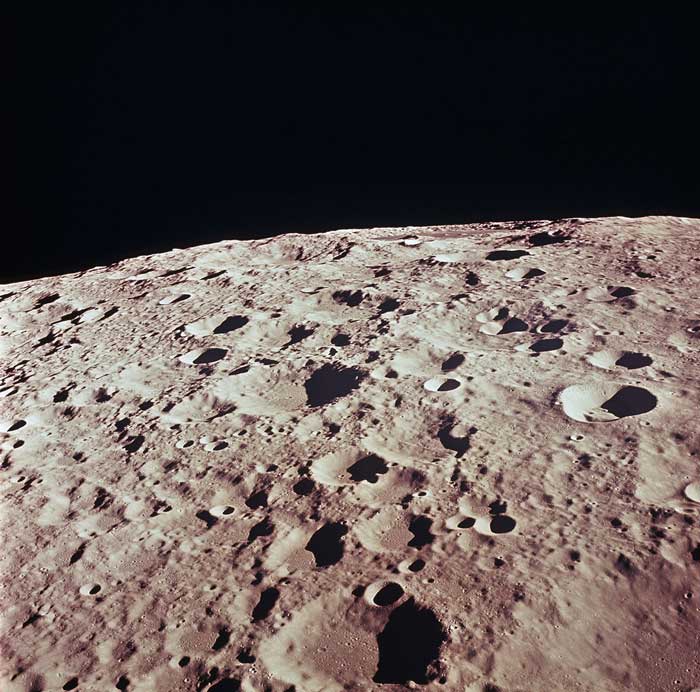
Since times unknown people gazed at the bright Moon in the night sky and wondered at its beauty. It was an enigma to them. The mystery about this wonderful heavenly body unfolded slowly with time.
The Moon is the only natural Satellite of the Earth, formed along with the Sun as well as all the Planets and their Satellites about 4.6 billion years ago from the same Nebula – a huge swirling cloud of gas and dust. It is the only natural Satellite, which is simply called "the Moon" because people didn't have any idea about the existence other moons until Galileo Galilei discovered four moons orbiting Jupiter in 1610. It is the heavenly body of the Earth, lying at a distance of about 3, 85,000 km. Its diameter is 3.470 km, which is about one-fourth of the Earth’s diameter.
In all probability, the Moon has a very small core, likely to be consisting of large amounts of sulphur and other elements. Its rocky mantle is about 1,330 km thick and made up of dense rocks, rich in iron and magnesium. From at least four billion years ago to fewer than three billion years past, Magma in the mantle made its way out to the surface in the form of volcanic eruptions. Today the volcanoes are all dormant and have not erupted for millions of years. The surface of the Moon is rocky and rugged. It is covered by thick dust, craters or hollows. There are mountain ranges with high peaks. The Leibnitz Mountains (10,670 meters), near the south pole of the Moon, is higher than Mt. Everest. There are large ridges and plains, called the ‘Maria’ or dark seas, which are not really seas, but vast dry plains.

There is no air, no sound and water and hence, no life on the Moon. The Moon has no light of its own. Moonlight is actually the light of the Sun reflected from the surface of the Moon. However, the reflecting capacity (albedo) of the Moon is very low. It reflects only 7% of the sunlight and the rest is absorbed. The gravitational pull of the Moon is much weaker on the Earth, but is strong enough to pull the oceans of the Earth and cause ‘Tides’.
The axis of the moon is tilted only about 1.5 degrees to the plane of the Earth’s orbit.. As a result, virtually there is no season in the Moon. Some areas of it are always lit by sunlight, and other places are perpetually draped in shadow.
The orbit of the Moon is elliptical and it takes 27 days, 7 hours and 43 minutes to rotate round the Earth. This period is called a sidereal month. However, this period of revolution of the Moon round the Earth is almost the same as the period of rotation on its axis. This means, the same face of the Moon is always directed to us and we see only one side of the Moon from Earth. In that case, for us, the other side of the Moon is the 'dark side', which has only been seen by the astronauts